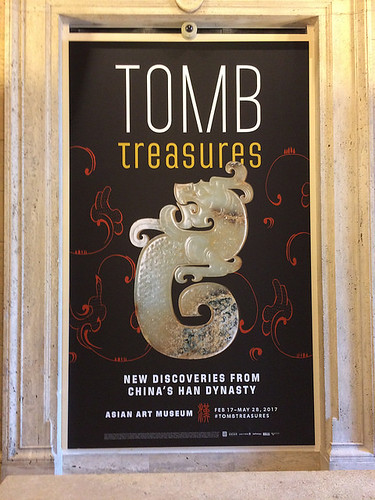
San Francisco's Asian Art Museum, in collaboration with Nanjin Museum in China, just opened a breathtaking exhibition, "Tomb Treasures, New Discoveries from China’s Han Dynasty" (February 17 - May 28, 2017), with the majority of the artifacts from Dayushan Jiandu Royal Tomb (excavated in 2011) and Xuzhou Chu Royal Tomb (excavated in 1995).
According to the Museum,
One of the most powerful civilizations of the ancient world, China’s Han dynasty achieved profound cultural and artistic influence, technological advancements and military might. Two thousand years later, discoveries of royal tombs allow us to glimpse these extraordinary accomplishments firsthand.
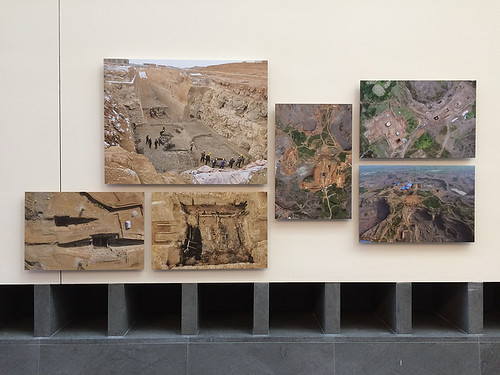
One of the most impressive artifacts on display was a rare percussion instrument - a group of bronze bells of various sizes on a rack in formation, each bell has a different pitch, like a ancient keyboard. Music and ceremony played very important roles in ancient China and this Bell Group perhaps was almost as important a symbol as a scepter of the state.

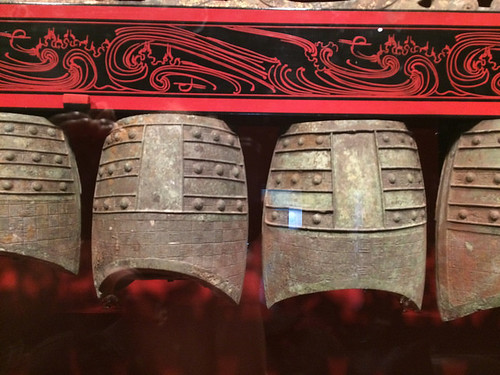

For indisputable symbols of royal status and state power, the exhibition presented some ceremonial and war weaponry, along with armor and warrior status made of wood, recalling bronze horses by Deborah Butterfield, in the shape of driftwood.
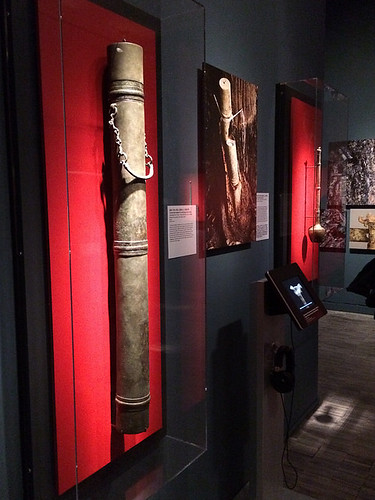
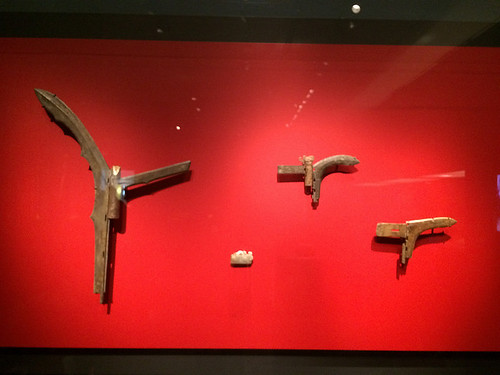
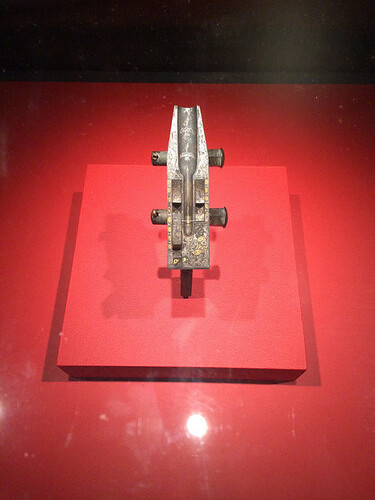


There were other objects symbolizing the royal status and power of those tomb owners, such as some powerful and graceful bronze tigers with gold and silver inlays, and other noble beasts adorning different daily objects.
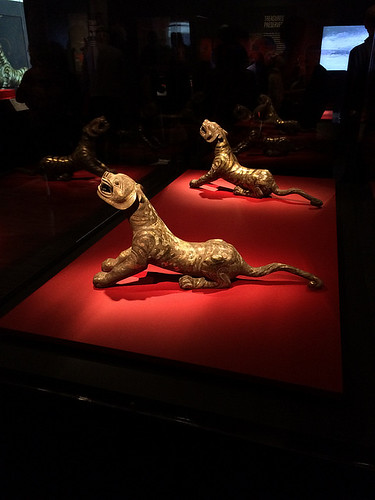
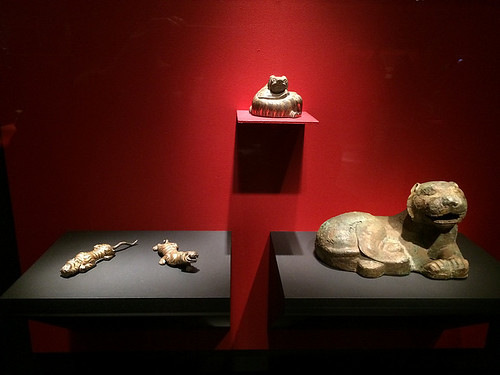
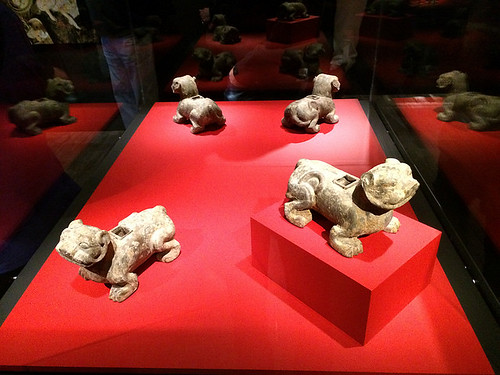
Another important aspect of court life was cooking, which, besides providing indispensable daily subsistence, was as important as music in ritual ceremonies. The daily or ritual cooking utensils were abundant in these tomb discoveries, and they impressed with their imposing bulk and delicate details.


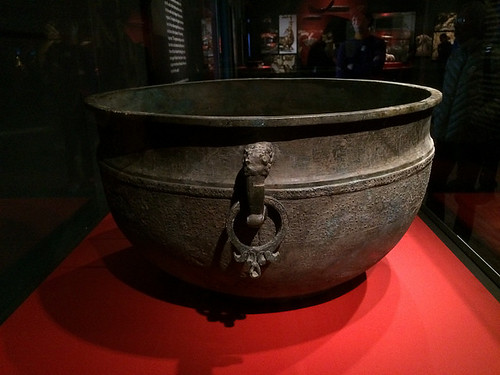




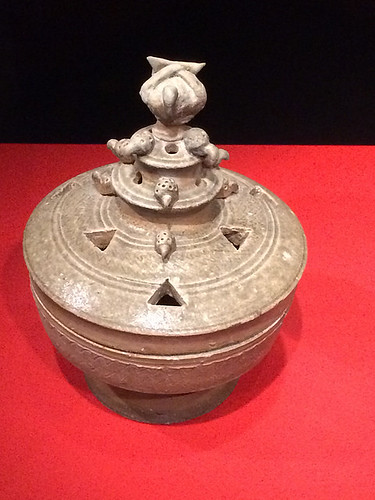
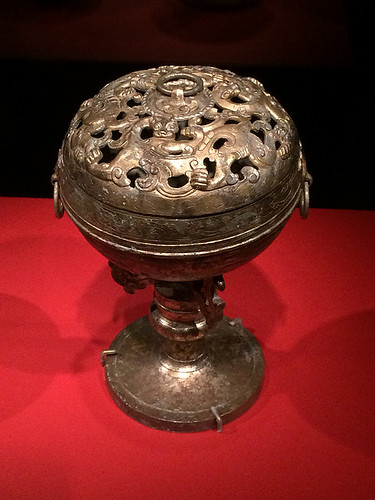
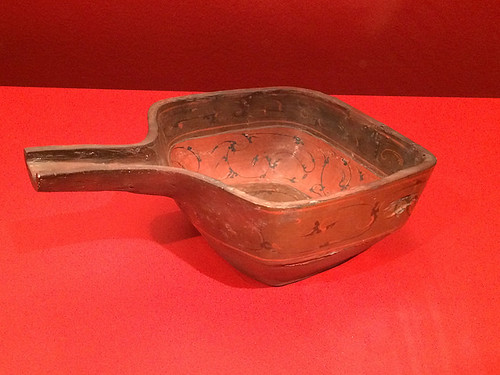
Courtly entertainment was represented by graceful dancer figurines and tiny jester statues, along with some stylized and humorous figure and animal statues.


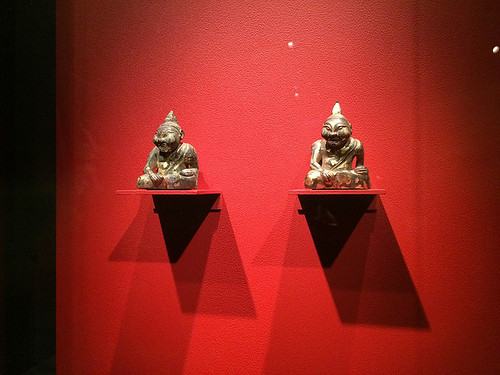

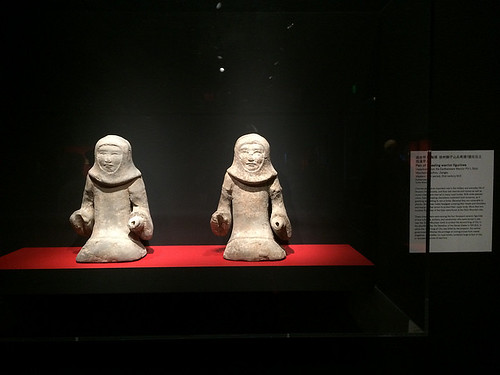
Echos of graceful shapes and movements of those court dancers could be seen on some wonderfully shaped lamps, including the joint-armed, heart-shaped one, whose unique design rendered it smokeless.
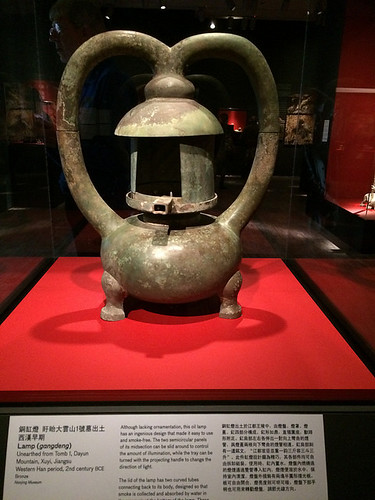
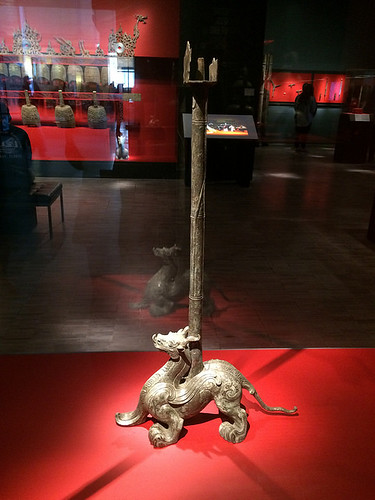

More personal objects in the exhibition were metal mirror, jade accessories, and precious metal clasps, etc. Elegant and delicate.


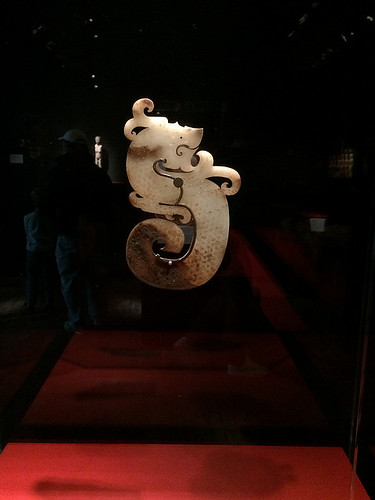
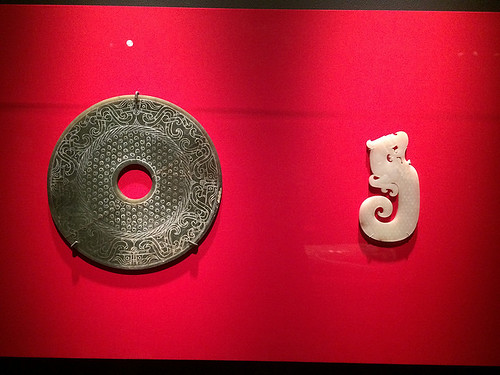


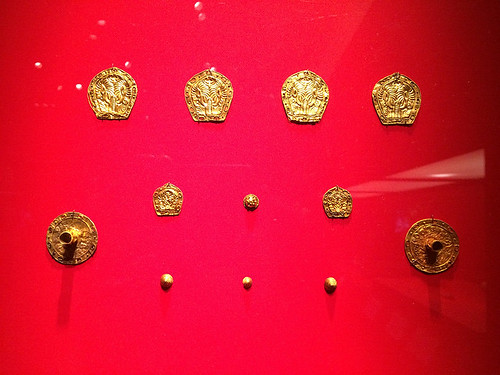
Finally, there were impressive objects from homes for the living and for the dead.
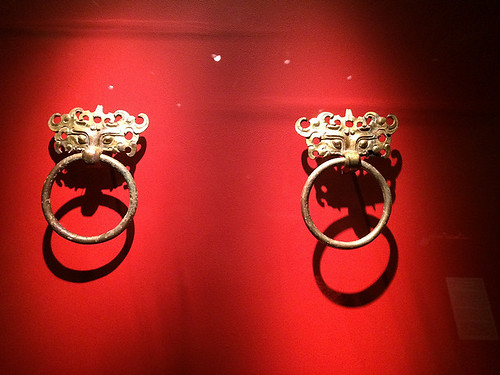
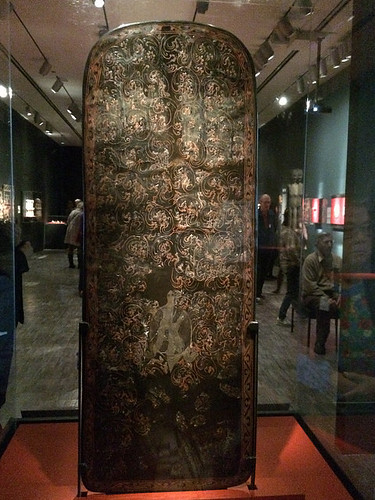
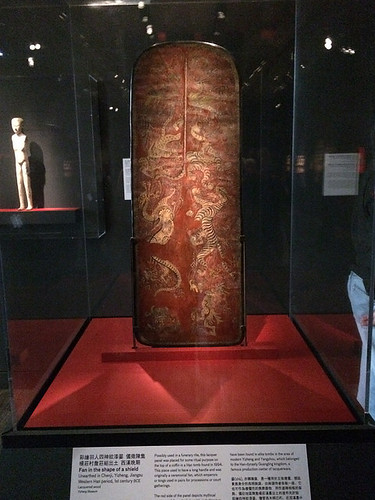
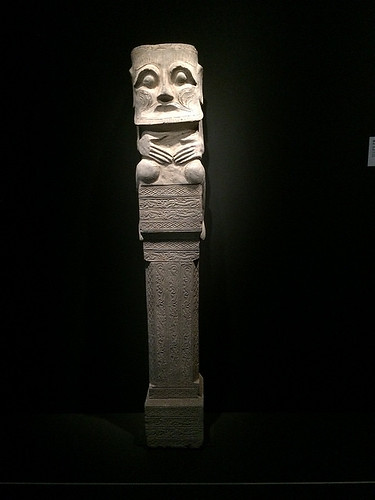
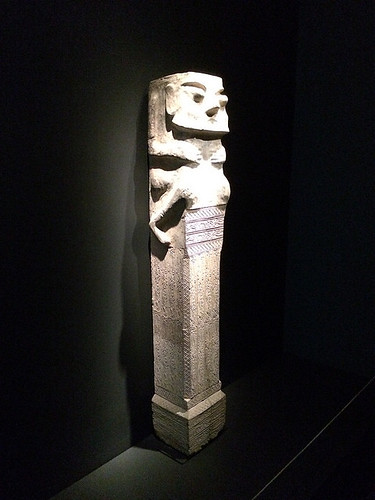
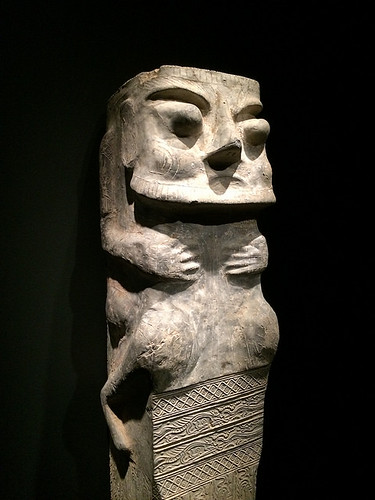
A pair of terracotta figurines, whose wooden arms had rotten away, were startlingly creepy and memorable. Time had changed by Han Dynasty (206 BC–220 AD) and artificial, instead of human sacrifices were to be entombed. A marked progression of society and culture.
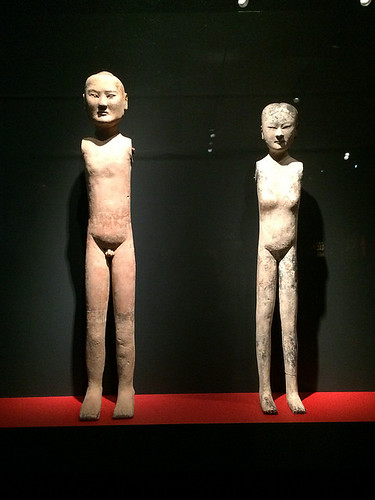
The most memorable objects of this exhibition were a huge marble tomb and a death shroud made of jade plates wired together with gold threads. Muted and low-key, yet most extravagant.

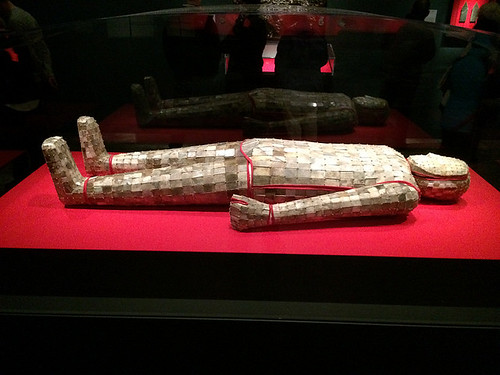
Other Related posts on Art · 文化 · Kunst:
- "28 Chinese" at Asian Art Museum, San Francisco
- Last Chance to See Terracotta Warriors in San Francisco Asian Art Museum
- Calligraphies at San Francisco Modern Art Museum
- Impressionism from National Gallery of Art (DC) in San Francisco
- Last Call - "The Girl With A Pearl Earring" in De Young Museum, San Francisco
- Art Displays in San Francisco International Airport (SFO)
- Art in the Streets of San Francisco
- Modernism from the National Gallery of Art in De Young Museum, San Francisco





No comments:
Post a Comment